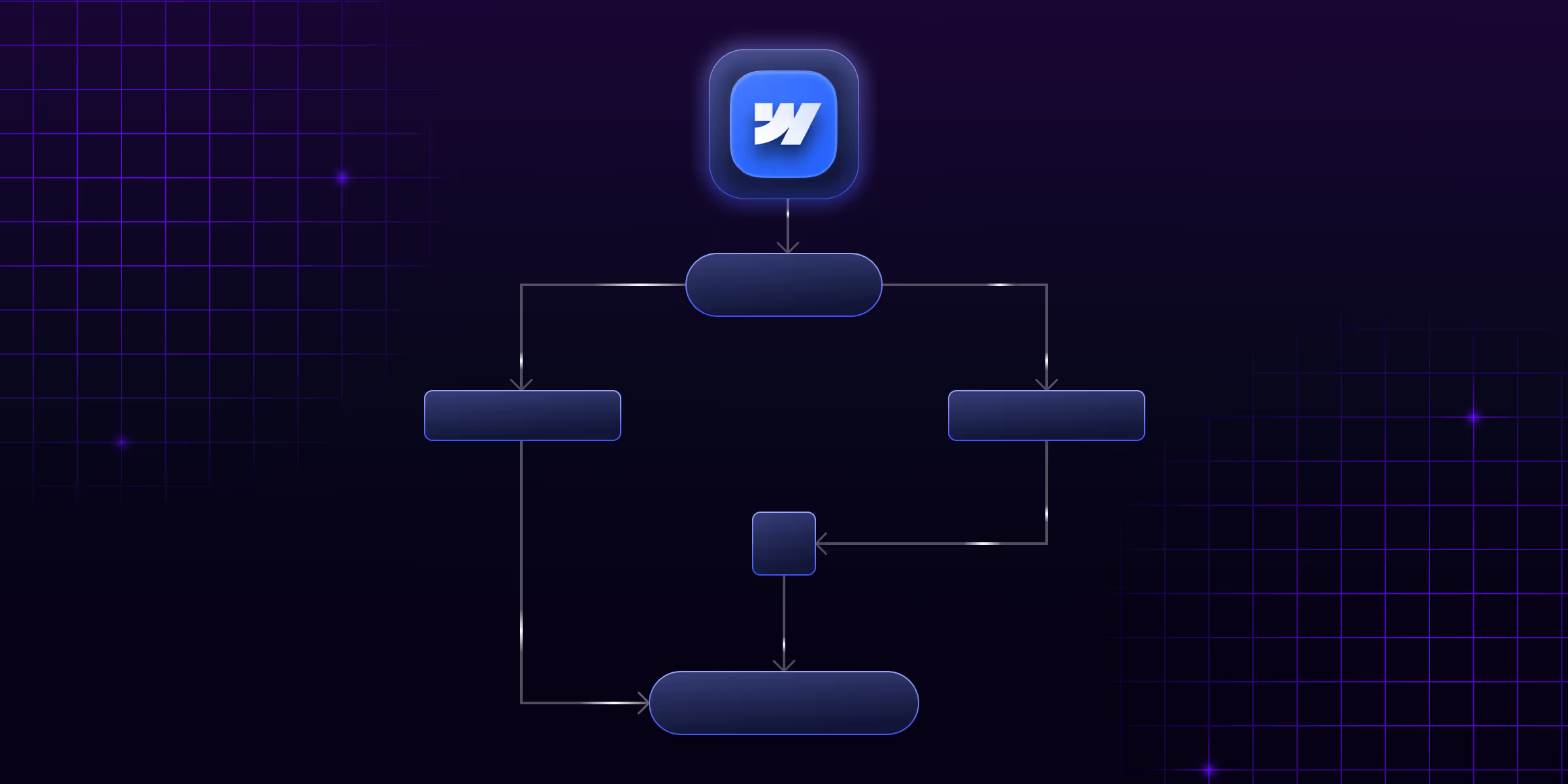5+ Powerful B2B Website Personalization Examples
See how B2B companies are driving success in 2025 with personalized pricing, chatbots, onboarding, and other proven strategies.

Actionable insights to improve SEO, speed, and conversions

Multilingual Website SEO Guide 2025
In today's interactive digital environment, limiting your website to a single language means missing out on 75% of the global internet population. With over 4.8 billion internet users speaking languages other than English, businesses that embrace multilingual SEO strategies consistently outperform their monolingual competitors by 100-150% in international markets. The opportunity for global expansion has never been greater, and the tools to achieve it have never been more accessible.
This guide displays how to leverage Webflow's cutting-edge localization features and proven multilingual SEO strategies to dominate international search results, expand your global reach, and build a sustainable competitive advantage in foreign markets. Whether you're an e-commerce brand targeting new markets or a SaaS company serving international clients, this guide provides the blueprint for multilingual success.
The statistics paint a compelling picture: businesses with multilingual websites experience average revenue increases of 40-60% within the first year of international expansion, while companies ignoring global markets limit their growth potential to just 25% of the worldwide internet audience.
The Global Opportunity:
Webflow's localization feature, launched in 2023, revolutionizes multilingual website development by combining enterprise-grade technical capabilities with intuitive visual design tools. Unlike third-party translation solutions that add complexity and performance overhead, Webflow's integrated approach delivers clean, SEO-optimized multilingual sites that search engines love and users trust.
Multilingual SEO extends far beyond simple translation—it's a comprehensive strategy that encompasses technical implementation, cultural adaptation, and market-specific optimization to ensure your content resonates with diverse global audiences while achieving top search rankings.
The process of optimizing your website to rank in search engines for multiple languages and regions. This involves technical structure, localized content creation, cultural adaptation, and region-specific SEO strategies that drive organic traffic from international markets.
The Webflow Advantage: Webflow's native localization feature provides unmatched advantages for multilingual SEO implementation:
Launched in late 2023, Webflow Localization represents a paradigm shift in multilingual website development, providing enterprise-grade capabilities through an intuitive visual interface that eliminates traditional barriers to international expansion.
Native Multi-Language Support: Unlike third-party solutions that rely on JavaScript overlays, Webflow Localization creates true language versions with dedicated URLs, separate content management, and optimized performance.
Automatic Technical Implementation: Webflow handles complex technical requirements automatically:
Visual Content Editing: The revolutionary aspect of Webflow Localization is the ability to edit content in context, seeing exactly how localized text affects design and layout in real-time.
CMS Integration: Dynamic content collections can be fully localized, enabling scalable management of product catalogs, blog posts, and other content types across all language versions.
SEO-Optimized Architecture: Webflow automatically implements SEO best practices:
Performance Excellence: Native localization maintains Webflow's performance advantages:
Market Opportunity Analysis: Before implementing multilingual SEO, conduct comprehensive research to identify the highest-value markets and languages for your business.
Key Research Areas:
Webflow Implementation: Prioritize languages based on business potential, starting with 2-3 highest-opportunity markets to ensure quality implementation before scaling.
Expected Results: Strategic market prioritization typically improves ROI by 200-300% compared to random language selection, while focused implementation delivers better results faster.
Native Language Research: The biggest mistake in multilingual SEO is translating keywords rather than researching actual search behavior in each target market.
Comprehensive Research Strategy:
Webflow Optimization: Use keyword research insights to optimize page titles, meta descriptions, headers, and content for each language version.
Advanced Techniques:
Cultural Adaptation Strategy: True localization adapts content to cultural preferences, local business practices, and market-specific needs rather than simply translating words.
Comprehensive Localization Elements:
Webflow Implementation: Leverage Webflow's visual editing capabilities to adapt not just text but entire design elements for cultural relevance.
Quality Assurance: Professional translation and cultural review ensure content resonates authentically with target audiences.
URL Structure Optimization: Webflow's subfolder approach (example.com/fr/) provides optimal SEO benefits by consolidating domain authority while clearly indicating language targeting.
Hreflang Implementation: Webflow automatically generates proper hreflang tags, but understanding their importance helps optimize multilingual performance:
<link rel="alternate" hreflang="en-US" href="https://example.com/en/" />
<link rel="alternate" hreflang="fr-FR" href="https://example.com/fr/" />
<link rel="alternate" hreflang="de-DE" href="https://example.com/de/" />
<link rel="alternate" hreflang="x-default" href="https://example.com/" />
Advanced Technical Elements:
Geographic Targeting: For businesses with a physical presence or region-specific services, integrate local SEO strategies with multilingual optimization.
Local SEO Elements for Each Market:
Webflow Integration: Use dynamic Webflow CMS collections to manage location-specific content across multiple languages efficiently.
International Performance Considerations: Users in different regions may have varying internet speeds and device preferences, requiring tailored optimization strategies.
Global Performance Strategy:
Webflow Advantages: Webflow's AWS-powered hosting and automatic optimization provide excellent global performance out of the box.
Primary Metrics:
Advanced Analytics Setup:
Comprehensive Performance Dashboard:
Continuous Optimization Process:
Duplicate Content Issues: One of the most critical mistakes is creating exact translations without considering how search engines interpret similar content across languages.
Solution: Use proper hreflang implementation, create genuinely unique content for each language, and ensure cultural adaptation goes beyond direct translation.
Incorrect URL Structure: Using parameters (?lang=fr) or non-standard structures that search engines struggle to understand and index properly.
Webflow Advantage: Automatic implementation of SEO-friendly subfolder structure eliminates this common mistake.
Poor Mobile Optimization: Failing to optimize multilingual sites for mobile users is particularly critical in emerging markets where mobile usage dominates.
Machine Translation Reliance: Using automated translation tools without human review often results in awkward phrasing, cultural insensitivity, and poor user experience.
Best Practice: Invest in professional translation services and native speaker content review to ensure quality and cultural appropriateness.
Ignoring Local Search Behavior: Assuming search patterns are universal when different cultures approach problems and solutions differently.
Research Solution: Conduct thorough keyword research in each target language using native speakers and local insights.
Cultural Insensitivity: Using colors, images, or concepts that may be inappropriate or offensive in target cultures.
Prevention Strategy: Work with cultural consultants and conduct thorough market research before launching in new regions.
AI-Powered Localization: Advanced AI translation tools are improving quality, but human oversight remains crucial for cultural nuance and brand voice consistency.
Voice Search Optimization: As voice search optimization for Webflow grows globally, optimizing for voice queries in multiple languages becomes increasingly important.
Visual Search Integration: Image-based search is growing worldwide, requiring localized visual content optimization for different markets.
Enhanced AI Integration: Future Webflow updates will likely include AI-powered translation assistance and content optimization suggestions.
Advanced Analytics Integration: Deeper integration with international analytics tools for better multilingual performance tracking.
Expanded Localization Features: Continued development of native localization capabilities, potentially including automated cultural adaptation features.
Performance Optimization: Ongoing improvements to the global CDN and performance optimization for international audiences.
The opportunity for international expansion through multilingual SEO has never been greater, and the tools to achieve it have never been more accessible. Webflow's revolutionary localization features, combined with proven multilingual SEO strategies, provide an unparalleled platform for global growth.
Unlike traditional approaches that require complex technical implementation or third-party solutions that compromise performance, Webflow's native localization delivers enterprise-grade multilingual capabilities through an intuitive visual interface. This unique combination enables rapid international expansion while maintaining the performance and SEO excellence that Webflow is known for.
The businesses that will dominate global markets in 2025 and beyond are those that recognize the massive opportunity in international expansion and have the tools and strategies to capture it effectively. Webflow's multilingual capabilities provide the foundation, but your commitment to understanding and serving international audiences will determine your success.
Ready to dominate international markets with a professionally optimized multilingual Webflow website? Contact theCSS Agency, certified Webflow localization experts specializing in international SEO strategies that deliver measurable global growth. Our team combines deep multilingual SEO expertise with advanced Webflow capabilities to create websites that rank highly and convert effectively in international markets, driving sustainable business expansion worldwide.
Multilingual SEO can involve costs for translation services, keyword research tools, and potentially building backlinks in multiple languages. However, the potential return on investment (ROI) can be significant, especially if you target high-growth markets.
While it's possible to translate content yourself, especially for languages you understand well, professional translation is recommended to ensure accuracy, cultural relevance, and a natural reading experience for your target audience.
Backlinks from high-authority websites in your target region are crucial for building trust and improving search engine ranking. Develop localized link-building strategies to acquire backlinks from relevant websites in each market.
Use website analytics tools to track website traffic, keyword rankings, user behavior data, and conversion rates for each language version of your website. This data will help you identify what's working and refine your multilingual SEO strategy for better results.

See how B2B companies are driving success in 2025 with personalized pricing, chatbots, onboarding, and other proven strategies.

Learn Webflow automation and how it simplifies workflow design and development. Find tools, use cases, and benefits for the productivity of your Webflow projects.

Learn how to create Webflow interactions and animations without coding. Master scroll effects, hover animations, and click triggers to build engaging, high-converting websites.
Quick Turnaround. No Contracts. Cancel Anytime. Book a 30 minutes consulting call with our expert.